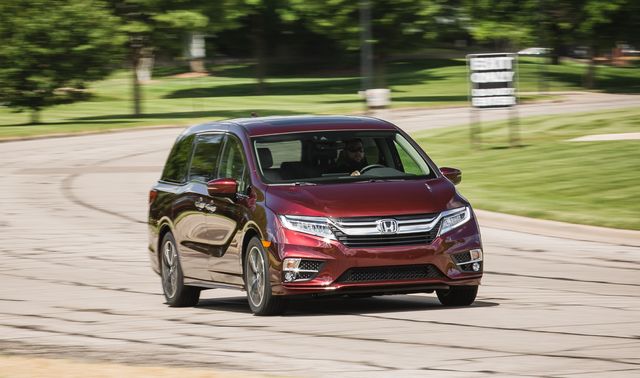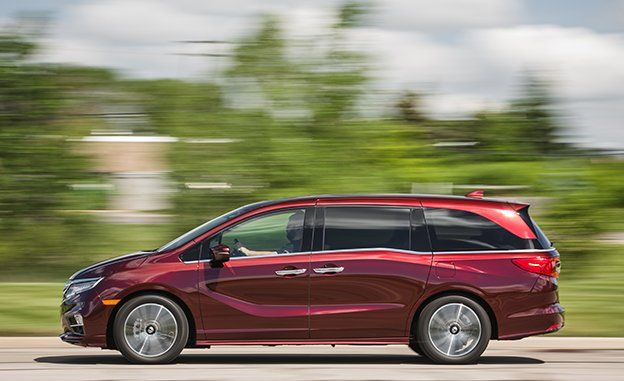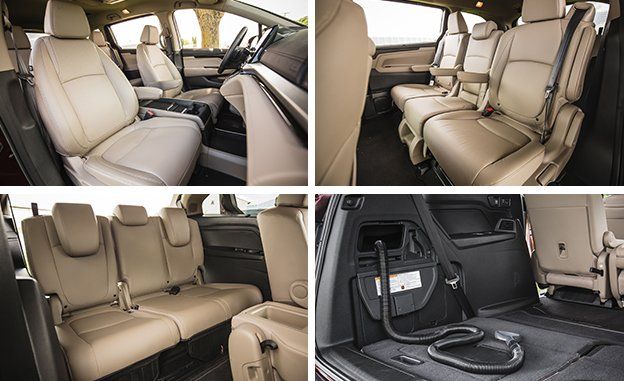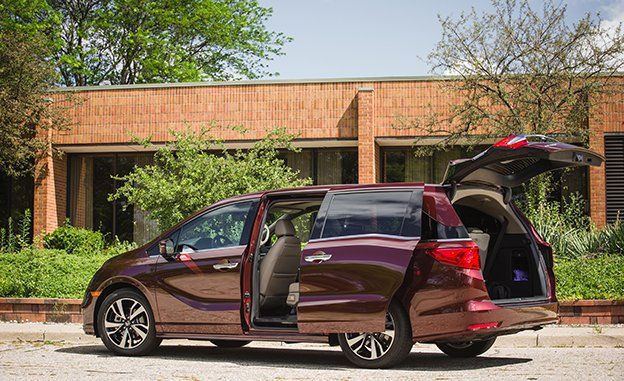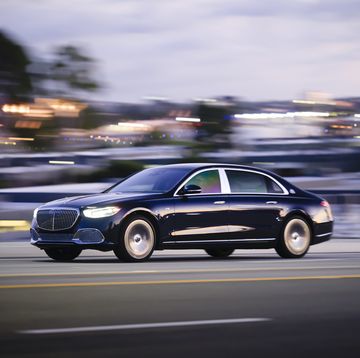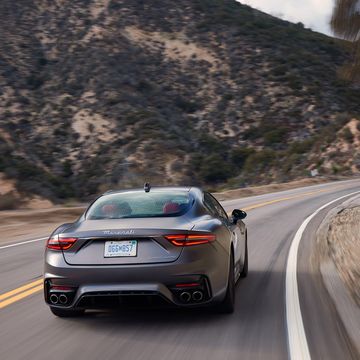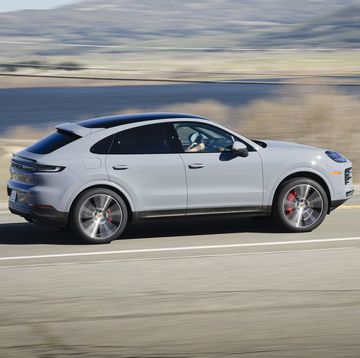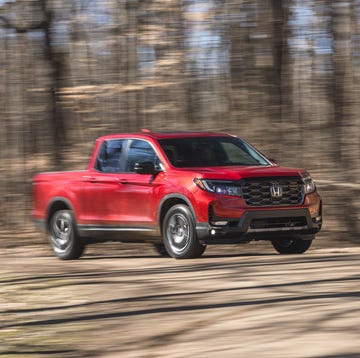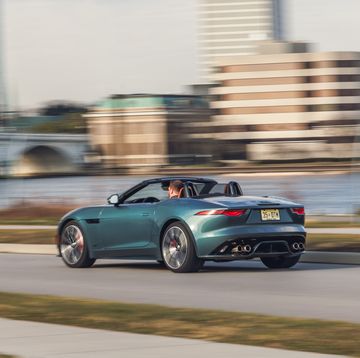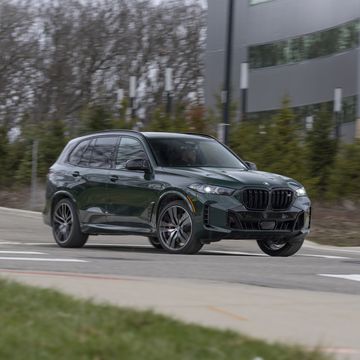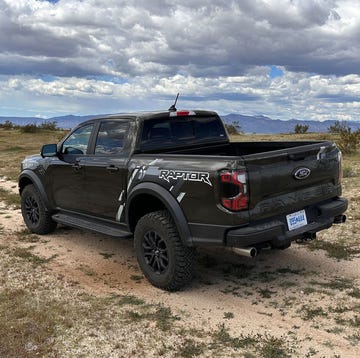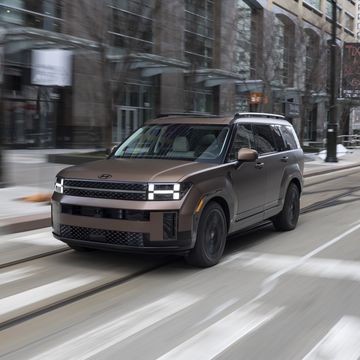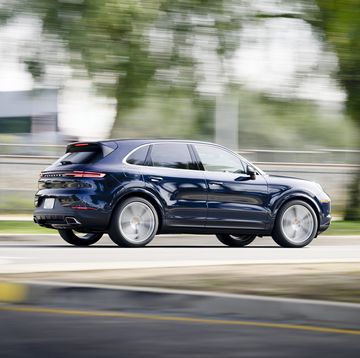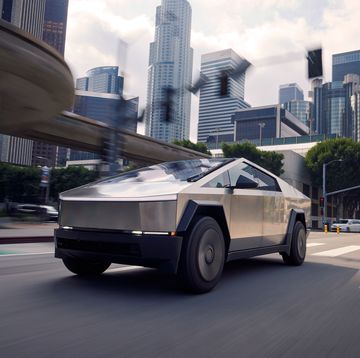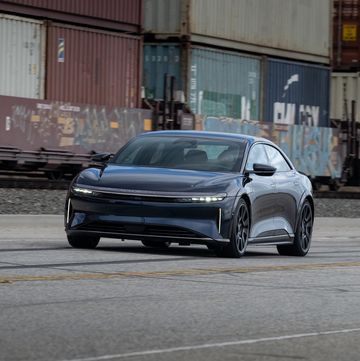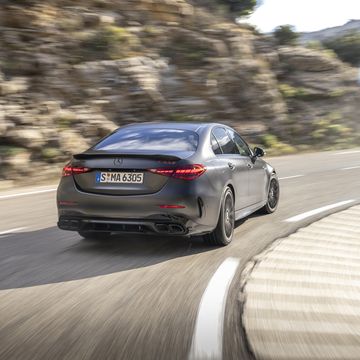Not that you’d ever be able to convince today’s crossover-crazy buyers, but three-row SUVs continue to move substantially in the minivan direction, with decreased ground clearance and towing capacity; front-wheel-drive architectures; and spacious, family-friendly cabins. As these segments converge, it begs the question: What makes a minivan a minivan? Sliding doors? Removable seats? The lines have been blurred, particularly in the case of the all-new Honda Odyssey, which shares a platform with the company’s three-row crossover, the Pilot.
Fleet-Footed Freighter
Pop the Odyssey’s hood and you’ll find the same 280-hp 3.5-liter V-6 that hustled our long-term Pilot from zero to 60 mph in just 6.0 seconds. The Pilot’s optional nine-speed automatic is standard on the Odyssey, but opt for the Touring or Elite trim levels—the latter is tested here—and you get Honda’s 10-speed automatic, the first slushbox from the maker to use planetary gearsets. The new transmission shifts imperceptibly under moderate throttle, is well matched to the V-6 engine, and is always in the right gear. It’s fuel efficient, too, particularly on long highway slogs. The combo of V-6 and 10-speed returned 30 mpg on our 75-mph highway fuel-economy test, beating the EPA highway rating by 2 mpg.
This Odyssey Elite also sprinted to 60 mph in 6.6 seconds—really quick for a minivan and quicker than many three-row crossovers. The Chrysler Pacifica, clearly the Odyssey’s biggest rival, claims a 7-hp advantage over the Honda but managed only a 7.3-second time in the same test. Whether putzing around town or merging into heavy freeway traffic, the Odyssey never feels as if it wants for power. Get on the throttle and the V-6 emits a sonorous tone that wouldn’t sound out of place in—you guessed it—an SUV.
Larger bumps transmit into the cabin more harshly than in the Pacifica, likely due to our test vehicle’s 19-inch wheels and low-profile tires. Otherwise, the Odyssey’s ride quality is agreeable; it balances composed cruising with competent cornering, which isn’t reflected in the unimpressive, 0.75-g skidpad result. But it changes direction nimbly and drives like a much smaller vehicle. Steering effort is light, but the electrically assisted system is accurate and direct. We’d call the Odyssey a slam dunk dynamically, except for a brake pedal that feels like stepping on a slice of angel food cake. And it’s more than just feel: Stopping from 70 mph required 184 feet—a longer distance than any rival and, in fact, rather SUV-like.
Blurred Lines
The Elite trim carries a hefty $47,610 price but brings leather seats, a heated steering wheel, ambient cabin lighting, a built-in vacuum cleaner, heated and ventilated front seats, and acoustically insulated glass to keep things hush-hush. When perched on the soft, supportive front seats behind a blocky dashboard with large swaths of silver-colored trim, it’s easy to forget that you’re driving a minivan. The seating position is carlike and there’s a clear view of the road ahead, but both the second and third rows can comfortably host adult-sized frames, unlike those in many three-row crossovers.
The most minivanlike feature is the second row’s trick Magic Slide seats that can be reconfigured in a number of ways. (The Magic Slide seats are standard on EX trims and above.) They also can be unlatched and removed from the Odyssey altogether, but they’re quite heavy. The two outboard seats weigh 68 pounds each, with the skinny middle seat coming in at exactly half that. The sliding seat’s mechanism remains in place after the seats themselves are removed, which means a completely flat load floor isn’t afforded to Odyssey buyers. Chrysler’s Stow ’n Go second row is a more elegant solution in our opinion—it folds into a large underfloor bin when not in use and provides a completely flat load floor, but it compromises seat comfort in the name of space efficiency.
With the third row stowed and the second row removed, the Odyssey can hold 52 carry-on-size suitcases, which is neck and neck with the Pacifica’s 53 but a whopping 14 more than the Pilot. With all the seats in place, it’s Odyssey, 11, Pacifica, 12, and Pilot, a measly 4. Bottom line: When it comes to hauling cargo, nothing short of a pickup truck beats a minivan.
Modern Family
The 2018 Odyssey marks the introduction of Honda’s newest infotainment system, and in every trim except for the base LX it’s crisply rendered on an 8.0-inch touchscreen display. Boasting a customizable layout of menu tiles that can be dragged and dropped to different locations, the new system is light-years better than the outgoing model’s and includes Apple CarPlay and Android Auto. The Odyssey Elite comes with an in-car PA system that broadcasts through the vehicle’s speakers as well as any headphones connected to the Elite’s standard rear-seat entertainment system. With onboard Wi-Fi enabled through a 4G LTE data connection, passengers can stream video, iHeart Radio, Spotify, and the like through the ceiling-mounted 10.2-inch flip-down display. Rear-seat occupants can even keep an eye on trip progress and their ETA at the intended destination.
A rear-seat monitoring feature—called CabinWatch—projects an image of rear-seat passengers onto the main infotainment display. It’s intended to be a handy way to keep tabs on “he started it” scenarios, but we found that young children were thrilled to see their own smiling faces on the screen. The eye rolls and glares don’t arrive until they’re older. Connected smartphones can be used to control the rear-seat climate controls, send destinations to the in-dash navigation system, and upload songs to a rolling playlist. Combating device discharging are three USB ports—which is pretty stingy—and four power outlets (three 12-volt and one 110-volt). Those relegated to the third row get their own headphone jacks for the entertainment system, too.
Honda’s package of active-safety measures includes automated emergency braking, adaptive cruise control, blind-spot monitoring, and lane-keeping assist. Impressively, the bundle of radar- and camera-based technologies is standard on the $34,800 Odyssey EX and above. (Touring and Elite models also get parking sensors in the front and rear.) The features work quite well, particularly the lane-keeping-assist function that wiggles the steering wheel to alert the driver to a possible lane departure just before it ever-so-slightly tugs the wheel to keep the Odyssey inside the intended lane. Many systems of this nature employ a far less subtle action that has us searching for the off button only a few minutes into our test drives.
So what makes a minivan a minivan? Sliding doors and removable seats certainly play a role, but their unrivaled interior space and innovative technologies are an even bigger part of their appeal. The all-new Odyssey is Honda’s playground for its latest and greatest ideas, and it still serves up exactly what families need. This top-spec Elite trim does one better, adding all of the things we want plus a few surprises. The evolution of the crossover hasn’t rendered the minivan unnecessary yet, and with the Odyssey, Honda has a three-row vehicle with a lot more real-world utility than most SUVs, including its own.
Specifications
Drew Dorian is a lifelong car enthusiast who has also held a wide variety of consumer-focused positions throughout his career, ranging from financial counselor to auto salesperson. He has dreamed of becoming a Car and Driver editor since he was 11 years old—a dream that was realized when he joined the staff in April 2016. He’s a born-and-raised Michigander and learned to drive on a 1988 Pontiac Grand Am. His automotive interests run the gamut from convertibles and camper vans to sports cars and luxury SUVs.
